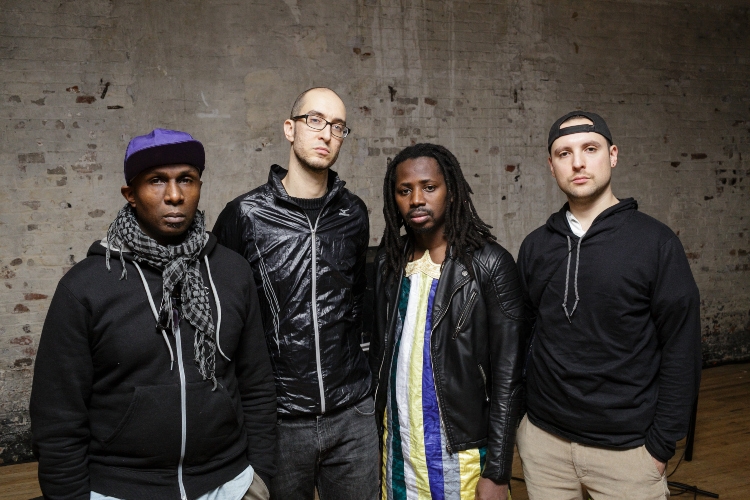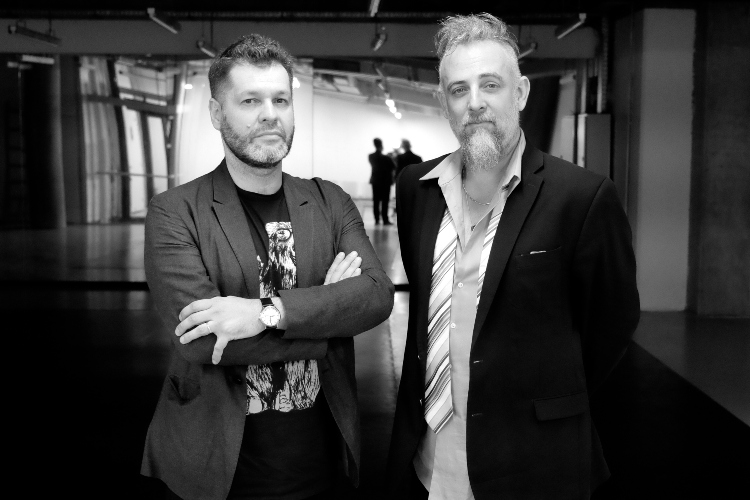Continuum: A Conversation with Steve Lehman on Sélébéyone (Part Two)
|
Getting your Trinity Audio player ready...
|
We continue our conversation with Steve Lehman (part one here) with a heavy focus on his writing for the distinctive ensemble, Sélébéyone. We discuss his compositional process, spectralism – writing with an eye to the acoustic properties of sound- and the deeper meaning behind sophomore release, Xaybu: The Unseen (Pi, 2022).
PostGenre: What was the compositional process for Xaybu? Did the music come first and the rap and poetry later, or was the music fit around pre-existing lyrics?
Steve Lehman: It varied with each piece. I composed half of the pieces on the record, and the other half were instrumental structures written by Maciek Lasserre, who also plays saxophone on the album. I don’t want to speak for Maciek too much but, with my compositions, there are two main categories.
With the first, I conceived of the structure of a composition, usually as I sat at my computer. I worked in some rhythmic structure or set of ideas about samples or electronic sounds. I also tried to think of how to make the composition conducive to a rap being placed over it or engaging with it in some way. If all of us were in the same place at that time, I played what I have for [rappers] Gaston [Bandimic] and [High] Priest [AKA H Prizm]. If we were not all together, I emailed it to them. The goal was to find something they could connect to and use on their own terms.
For the other category of compositions, I got the lyrics first. There are a few pieces where I received an a cappella recording of vocal tracks ahead of time and then composed music around them. When I was composing pieces in this way, I tried to highlight what is rhythmically or tonally distinctive about the vocal tracks.
PG: Was the compositional process on Xaybu similar to that on the prior Sélébéyone album (Pi, 2016)?
SL: Well, with the first album, we were in more uncharted territory in some ways. When we did the first one, we had not yet performed on stage and were trying to figure out a way towards doing so. After it came out, we did quite a bit of touring for the first record. In the process of touring, we discovered several strategies to help with executing things on stage. These also proved beneficial for composing. With Xaybu, we mostly composed what we wanted to hear or envisioned compositionally and then worked from there to put the pieces together in a way that allows us to perform the piece together. I don’t know if that is distinctly different from how we approached writing the music for the first album but, to me, it felt like a real transition or evolution of the compositional process to focus first on the idea and then on how to make it work instead of the reverse.
PG: Do you find it more challenging to write for a group of several musicians than for just yourself on some of the solo works you have done, like Xenakis and the Valedictorian (Pi, 2020)?
SL: It is difficult to answer that question without going into some generalities. I’ve certainly done significant solo saxophone work. I recorded Xenakis in my car right when the pandemic hit.
I also have several solo tracks on Demian as Posthuman (Pi, 2005). One of the compositions, “Damage Mobility” is just me overdubbed four times. But so much of that record also involved using electronics and bringing in a few other musicians like Tyshawn [Sorey], Meshell [Ndegeocello], and others. Both experiences were different, as is working with a group.
From a high level, working solo gives you more control over the project, which can sometimes prove very valuable. But you also lose the resource of collaborating with other musicians. Collaboration can make music that is much better than what you can do just by yourself. There is a bit of a tradeoff of control over compositional detail with getting other ideas and voices involved.
PG: One concept you have explored in your works is that of spectralism. Among other things, your octet album Transformation, Travail, and Flow (Pi, 2009) was the first fully-realized exploration of spectral harmony in the history of recorded “jazz.” Did you use spectral harmonic concepts in your compositions for Xaybu?
I definitely use spectral harmonic concepts in my pieces on the album. Many of the harmonies employed what people call spectral techniques. Tunings are a little altered to create harmonies more connected to frequency relationships than the typical identification of notes as, say, C or C#. On many, possibly most, of my pieces, that concept of harmony is embedded into the sounds.
PG: What do you feel spectral harmony provides you as a compositional language that is lacking in more traditional methods?
That’s a good question.
Spectral harmony overlaps quite a bit with the foundations of traditional Western European harmony. There are many concepts shared between those two approaches to harmony. Because of the similarities, spectral harmony often doesn’t feel like a super radical departure from sounds you’ve heard. Sometimes it can, but often spectral harmonies sound more otherworldly than completely foreign or unknown.
That said, however, the ultimate goal of any creative music is to find a way to express yourself in the truest way possible. Having a unique harmonic language or a distinctive rhythmic approach are important pieces of the puzzle. Over the years, I have developed a harmonic language that is, in some ways, unique to me. But it is, hopefully, just a tool to express something more personal to me. As counterintuitive as it may sound, I’ve found that the more personal I can make the music, the more other people seem to connect with it as well. They seem to pick up on the fact that the music I make is very special to me and that I put a lot of enthusiasm and creative investment behind it.
PG: In terms of the similarities between spectral harmony and more traditional approaches to harmony, in your doctoral dissertation, “Liminality as a Framework for Composition: Rhythmic Thresholds, Spectral Harmonies and Afrological Improvisation”….
[Laughing] Oh man, I’m sorry you had to read that.
PG: No, it is very interesting. In the dissertation, you mention that your approach to spectral harmony is particularly guided by the works of Gérard Grisey and Tristan Murail, two of the forefathers of spectralism. In addition to Lewis, who we spoke about earlier, Murail was also one of your primary teachers at Columbia University. The dissertation notes that both Grisey and Murail did not see spectral music as some all-encompassing compositional school but ideas and attitudes particularly suited to hybrid music. With this in mind, do you feel Sélébéyone’s hybridization of Senegalese hip hop, electronic music, and avant-garde jazz makes the group particularly well suited for compositions making use of spectral concepts?
Well, In terms of hybrids, Murail’s focus is more on the cognitive level than, say, a fusion of genres. That is, he focuses on the spaces in between states more than broader musical categories. On the tune “Liminal”, you hear a sound that is like a church bell. You hear more than one note, but it also somehow sounds like a singular pitch. The sound is somewhere between a note and a chord. In spectral music, that idea applies to all aspects of the music, not only the harmony. Rhythmically, it is also difficult to place. Even knowing from the sound precisely what instrument you are hearing can be difficult with spectral music. A flute may sound like one, but it also may sound as if coupled with some other instrument.
In a way, that exploration of interstitial space is also related to improvisation. Or at least how I engage with improvisation. Improvisation can be an all-encompassing example of musical practice that exists in between the state of things you are familiar with and those that are unknown to you; between something structured and something completely unstructured. I think that, conceptually, there is a significant overlap between improvisation and spectral composition.
PG: That focus on the space between the known and unknown seems to tie directly into the album’s title as “xaybu” is a Wolof term referring to al-Ghaib; something unknowable and unseeable.
Definitely. But there are many levels to naming the album Xaybu.
First and foremost, the album is an artistic collaboration between the five of us. When you congregate a group of artists, you do not always know where the music will go or the results you will get.
The name also reflects our commitment to prioritizing sounds that feel very personal and fresh to us. We focus on things that we haven’t heard before and push ourselves to get into musical spaces with which we are not too familiar. And that may be risky because we don’t necessarily have the references to know what will be successful or manifest into something really meaningful to listeners. I think that prioritizing musical discovery is not necessarily audible or visible, so that reflects the title as well. Of course, there are also the spiritual implications of putting your trust in music. Often, to make meaningful music, you must put your faith in something bigger that you cannot see or fully comprehend.
Xaybu: The Unseen will be available on Pi Recordings on August 26, 2022. It can be purchased on Bandcamp.
More Information on Steve Lehman can be found on his website.
Photo credit: Willie Davis




One thought on “Continuum: A Conversation with Steve Lehman on Sélébéyone (Part Two)”